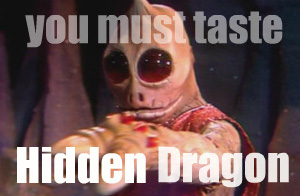Activist, educator and author Angela Davis will be in Ann Arbor on Monday, delivering a lecture titled “Impediments to the Dream: The Prison Industrial Complex and the Dream.” Davis, as I suspect many of you know, before going on to have a successful career as an academic in the History of Consciousness Department as U-C Santa Cruz, served time in prison, after a nationwide manhunt, for her role in the August 1970 attempted escape of three African American prisoners who had been charged with the retaliatory killing of a white guard at California’s Soledad Prison. (The three men, commonly referred to as the Soledad Brothers, are thought to have committed the murder after having heard that another white guard would not be investigated for the shooting deaths of three African American inmates three days earlier.) Davis, having purchased the weapons used in the daring courthouse escape, during which a judge by the name of Harold Haley was murdered, was charged with “aggravated kidnapping” and first degree murder. After serving 18 months in prison, however, she was released when an all-white jury returned the verdict of ‘not guilty.’ (Apparently, the fact that she’d purchased the guns a few days before was not, in and of itself, sufficient to establish that she had been behind the plot.) And, since her release, Davis has been an outspoken advocate for prisoner rights. The following clip comes from a piece written by Davis in 1998 titled “What is the Prison Industrial Complex? Why does it matter?.”
Imprisonment has become the response of first resort to far too many of the social problems that burden people who are ensconced in poverty. These problems often are veiled by being conveniently grouped together under the category “crime” and by the automatic attribution of criminal behavior to people of color. Homelessness, unemployment, drug addiction, mental illness, and illiteracy are only a few of the problems that disappear from public view when the human beings contending with them are relegated to cages.
Prisons thus perform a feat of magic. Or rather the people who continually vote in new prison bonds and tacitly assent to a proliferating network of prisons and jails have been tricked into believing in the magic of imprisonment. But prisons do not disappear problems, they disappear human beings. And the practice of disappearing vast numbers of people from poor, immigrant, and racially marginalized communities has literally become big business.
The seeming effortlessness of magic always conceals an enormous amount of behind-the-scenes work. When prisons disappear human beings in order to convey the illusion of solving social problems, penal infrastructures must be created to accommodate a rapidly swelling population of caged people. Goods and services must be provided to keep imprisoned populations alive. Sometimes these populations must be kept busy and at other times — particularly in repressive super-maximum prisons and in INS detention centers — they must be deprived of virtually all meaningful activity. Vast numbers of handcuffed and shackled people are moved across state borders as they are transferred from one state or federal prison to another.
All this work, which used to be the primary province of government, is now also performed by private corporations, whose links to government in the field of what is euphemistically called “corrections” resonate dangerously with the military industrial complex. The dividends that accrue from investment in the punishment industry, like those that accrue from investment in weapons production, only amount to social destruction. Taking into account the structural similarities and profitability of business-government linkages in the realms of military production and public punishment, the expanding penal system can now be characterized as a “prison industrial complex.”
Almost two million people are currently locked up in the immense network of U.S. prisons and jails. More than 70 percent of the imprisoned population are people of color. It is rarely acknowledged that the fastest growing group of prisoners are black women and that Native American prisoners are the largest group per capita. Approximately five million people — including those on probation and parole — are directly under the surveillance of the criminal justice system.
Three decades ago, the imprisoned population was approximately one-eighth its current size. While women still constitute a relatively small percentage of people behind bars, today the number of incarcerated women in California alone is almost twice what the nationwide women’s prison population was in 1970. According to Elliott Currie, “[t]he prison has become a looming presence in our society to an extent unparalleled in our history — or that of any other industrial democracy. Short of major wars, mass incarceration has been the most thoroughly implemented government social program of our time.”
To deliver up bodies destined for profitable punishment, the political economy of prisons relies on racialized assumptions of criminality — such as images of black welfare mothers reproducing criminal children — and on racist practices in arrest, conviction, and sentencing patterns. Colored bodies constitute the main human raw material in this vast experiment to disappear the major social problems of our time. Once the aura of magic is stripped away from the imprisonment solution, what is revealed is racism, class bias, and the parasitic seduction of capitalist profit. The prison industrial system materially and morally impoverishes its inhabitants and devours the social wealth needed to address the very problems that have led to spiraling numbers of prisoners.
As prisons take up more and more space on the social landscape, other government programs that have previously sought to respond to social needs — such as Temporary Assistance to Needy Families — are being squeezed out of existence. The deterioration of public education, including prioritizing discipline and security over learning in public schools located in poor communities, is directly related to the prison “solution.”
As prisons proliferate in U.S. society, private capital has become enmeshed in the punishment industry. And precisely because of their profit potential, prisons are becoming increasingly important to the U.S. economy. If the notion of punishment as a source of potentially stupendous profits is disturbing by itself, then the strategic dependence on racist structures and ideologies to render mass punishment palatable and profitable is even more troubling.
Prison privatization is the most obvious instance of capital’s current movement toward the prison industry. While government-run prisons are often in gross violation of international human rights standards, private prisons are even less accountable. In March of this year, the Corrections Corporation of America (CCA), the largest U.S. private prison company, claimed 54,944 beds in 68 facilities under contract or development in the U.S., Puerto Rico, the United Kingdom, and Australia. Following the global trend of subjecting more women to public punishment, CCA recently opened a women’s prison outside Melbourne. The company recently identified California as its “new frontier.”…
And, as we know, things have only gotten worse over the 15 years since this was written.
[note: For more on the threat posed by private prisons today, check out my recent interview with prisoner rights crusader Bob Sloan.]
Davis, who is being brought to campus by Students Organizing Against Prisons (SOAP), will be speaking from 2:00 to 4:00 PM, in the Michigan Union Ballroom. Arrangements, as I understand it, have also been made to stream video of her talk to the Union’s Pendleton Room, as well as the Hatcher Graduate Library Gallery, the Duderstadt Center Conference Room 1180, and the Detroit Center, as a great many people are expected.
Oh, and I was sent these images earlier today by a reader of this site who plans to show up at tomorrow’s lecture with the intention of further spreading our ever-evolving Pure Michigan meme.


Here’s a fun fact… The state of Michigan, for those of you who don’t already know, spends more on prisons each year than on higher education. (I suspect there are more states that do so now, but, in 2008, we were one of only five states that did.)
For a complete list of all the Martin Luther King Day related activities taking place at the University of tomorrow, click here. It looks like there’s a lot of interesting stuff going on, but I’m particularly interested in the panel on mental health and incarceration, which features our friend Natalie Holbrook.
Oh, and happy Robert E. Lee Day to all the racists in the audience.

 MARK: Let’s start with where you’re from, and what brought you to Ann Arbor. Based on what I can glean from Facebook, it looks like you were born in Ohio… is that correct?
MARK: Let’s start with where you’re from, and what brought you to Ann Arbor. Based on what I can glean from Facebook, it looks like you were born in Ohio… is that correct? MARK: It’s been about a dozen years since I’ve lived in Los Angles, so I don’t imagine that my recommendations will be of much use, but there’s a little breakfast place in Burbank called Barron’s that I absolutely loved. The owners opened it right after WWII, and it was probably the place in Los Angeles that I felt the most at home. (It was like eating in your grandmother’s living room… And by “your grandmother,” I mean mine. I have no idea what your grandmother’s living room was like. My research into your life was not that extensive.) Their food was incredible, and they were super nice. If I’m not mistaken, among other things, they made the pies for Twin Peaks. And none of their silverware, plates and mugs matched… Damn. I just checked, and
MARK: It’s been about a dozen years since I’ve lived in Los Angles, so I don’t imagine that my recommendations will be of much use, but there’s a little breakfast place in Burbank called Barron’s that I absolutely loved. The owners opened it right after WWII, and it was probably the place in Los Angeles that I felt the most at home. (It was like eating in your grandmother’s living room… And by “your grandmother,” I mean mine. I have no idea what your grandmother’s living room was like. My research into your life was not that extensive.) Their food was incredible, and they were super nice. If I’m not mistaken, among other things, they made the pies for Twin Peaks. And none of their silverware, plates and mugs matched… Damn. I just checked, and  BECCA: OMG, for real! The Grand Canyon is completely dumbfounding. I couldn’t believe what a strong reaction I had to seeing it for the first time. Seriously, I almost cried. We made it there just before sunset and watched the sun go down. All and all the trip was a total success! I even got to see a longtime Ann Arbor friend who moved to Arizona on the way. We didn’t make many stops except to see a few Route 66 landmarks and the Grand Canyon.
BECCA: OMG, for real! The Grand Canyon is completely dumbfounding. I couldn’t believe what a strong reaction I had to seeing it for the first time. Seriously, I almost cried. We made it there just before sunset and watched the sun go down. All and all the trip was a total success! I even got to see a longtime Ann Arbor friend who moved to Arizona on the way. We didn’t make many stops except to see a few Route 66 landmarks and the Grand Canyon.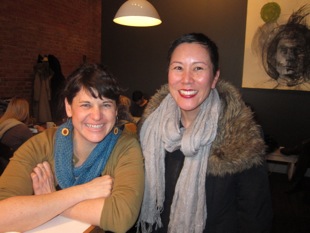 MARK: So, the Pot & Box empire is expanding. The current plan, as I understand it, is to keep the location in Ann Arbor, and open one in Detroit, in what was an old gas station on Michigan Avenue. Is that right?
MARK: So, the Pot & Box empire is expanding. The current plan, as I understand it, is to keep the location in Ann Arbor, and open one in Detroit, in what was an old gas station on Michigan Avenue. Is that right? LISA: Firstly, I just have to mention how catalyst-y the Hatch competition was for Pot & Box. Our brand awareness catapulted in the city, and I connected with Joe Posch through a clever alliance between two retailers who share the time-traveling bachelor demographic. Secondly, Detroit has been courting me for a while. It started with baseball games, new restaurants, and cool concerts, and then there was the befriending of small business owners, going to loft parties, recognizing people all over town. And, then, all of a sudden, I realized that I was driving over three or four times a week, and I couldn’t get anything done at coffee shops because I’d gotten to know the staff and my fellow regulars. So, yes, it’s totally the youthful energy and the entrepreneurial scene, but it’s more that that. It’s the sum of all the parts. I love driving around until i get lost, figuring out how to navigate the city. I love heated conversations with old friends (and brand-new ones) about the latest absurd or hopeful Detroit-centric plan. I love taking in old buildings, sometimes photographing them, sometimes hearing their stories, mostly making up my own. I love that my family hails from Detroit, and that I’ve made my way back, chasing ghosts.
LISA: Firstly, I just have to mention how catalyst-y the Hatch competition was for Pot & Box. Our brand awareness catapulted in the city, and I connected with Joe Posch through a clever alliance between two retailers who share the time-traveling bachelor demographic. Secondly, Detroit has been courting me for a while. It started with baseball games, new restaurants, and cool concerts, and then there was the befriending of small business owners, going to loft parties, recognizing people all over town. And, then, all of a sudden, I realized that I was driving over three or four times a week, and I couldn’t get anything done at coffee shops because I’d gotten to know the staff and my fellow regulars. So, yes, it’s totally the youthful energy and the entrepreneurial scene, but it’s more that that. It’s the sum of all the parts. I love driving around until i get lost, figuring out how to navigate the city. I love heated conversations with old friends (and brand-new ones) about the latest absurd or hopeful Detroit-centric plan. I love taking in old buildings, sometimes photographing them, sometimes hearing their stories, mostly making up my own. I love that my family hails from Detroit, and that I’ve made my way back, chasing ghosts.  MARK: Is this the place? After we ran into you the other day, we headed down the street to see if I could find what will be the home of the new Pot & Box, and this was the property that looked the most like what you described.
MARK: Is this the place? After we ran into you the other day, we headed down the street to see if I could find what will be the home of the new Pot & Box, and this was the property that looked the most like what you described.  Growing up, my family built two houses from the ground-up, and remodeled constantly, which is certainly why I’m not only comfortable, but tend to thrive in sawdust-coated, half-painted transitional environments. I also know that everything takes eons longer and heaps more money than you want it to. Once I nest in the new space, it’ll be forever-ish, so I’ve dealt with this by purchasing an old ice cream truck, from which I’ll push petals out into the city. We’re taking flowers the way of the food truck — mobile!
Growing up, my family built two houses from the ground-up, and remodeled constantly, which is certainly why I’m not only comfortable, but tend to thrive in sawdust-coated, half-painted transitional environments. I also know that everything takes eons longer and heaps more money than you want it to. Once I nest in the new space, it’ll be forever-ish, so I’ve dealt with this by purchasing an old ice cream truck, from which I’ll push petals out into the city. We’re taking flowers the way of the food truck — mobile! LISA: In addition to Two James Distillery, which is opening in a few months, there’s also
LISA: In addition to Two James Distillery, which is opening in a few months, there’s also 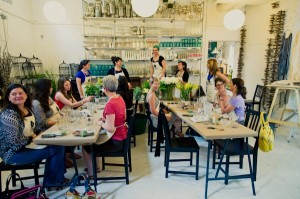 MARK: I’d be remiss if I didn’t ask how thing are going with Pot & Box Ann Arbor… And what are your plans for the future of that space? Will things continue on as usual, or should we expect to see signs of evolution?
MARK: I’d be remiss if I didn’t ask how thing are going with Pot & Box Ann Arbor… And what are your plans for the future of that space? Will things continue on as usual, or should we expect to see signs of evolution?
 The gun control debate in the United States went into overdrive today, as the President, surrounded by children who had written letters to the White House about gun violence, called on Congress “
The gun control debate in the United States went into overdrive today, as the President, surrounded by children who had written letters to the White House about gun violence, called on Congress “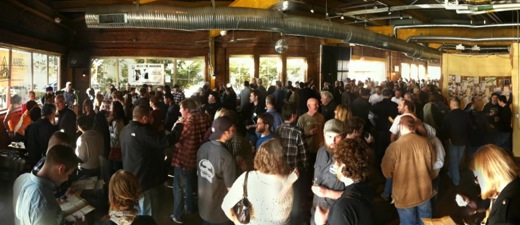
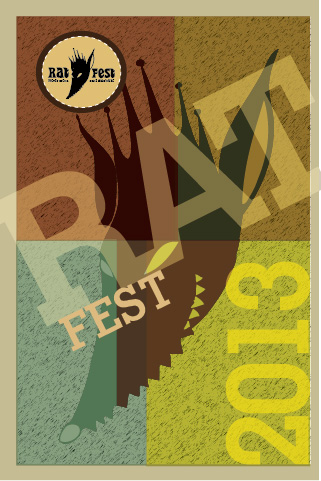 MARK: Looking over the list of participants, which includes representatives of the
MARK: Looking over the list of participants, which includes representatives of the 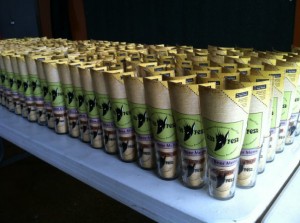 MARK: Looking back over the past events, what are some of your favorite beers that have been introduced to the world during Rat Fest?
MARK: Looking back over the past events, what are some of your favorite beers that have been introduced to the world during Rat Fest?  BARI: Ticket holders will be voting this year via a smart phone app or paper ballot. Awards will be presented in the 5 following categories: Favorite group of beers, Favorite overall beer, Most original use of predetermined recipe, Best decorated group table, and Most unique beer. The coveted Beer Cheese Trophy will again be presented to the club that takes Favorite Group of Beers.
BARI: Ticket holders will be voting this year via a smart phone app or paper ballot. Awards will be presented in the 5 following categories: Favorite group of beers, Favorite overall beer, Most original use of predetermined recipe, Best decorated group table, and Most unique beer. The coveted Beer Cheese Trophy will again be presented to the club that takes Favorite Group of Beers. JOHN: We do sample and test all beers prior to releasing them. As this is indeed a food product, we want participants to have a safe and enjoyable experience. Every recipe is scrutinized by our staff prior to the brew session, and is monitored throughout fermentation and conditioning, the same way we would with any of our production beers. We have yet to see any outlandish attempts at pushing the envelope, such as an Ypsilanti Irish Red Squirrel, a Déjà vu Dunckel, or a Michigan Avenue C’mon Inn Bedspread Stout.
JOHN: We do sample and test all beers prior to releasing them. As this is indeed a food product, we want participants to have a safe and enjoyable experience. Every recipe is scrutinized by our staff prior to the brew session, and is monitored throughout fermentation and conditioning, the same way we would with any of our production beers. We have yet to see any outlandish attempts at pushing the envelope, such as an Ypsilanti Irish Red Squirrel, a Déjà vu Dunckel, or a Michigan Avenue C’mon Inn Bedspread Stout. MARK: Aside from Rat Fast, how are things going at the Brewery? Is there anything new that you’re working on that folks should know about?
MARK: Aside from Rat Fast, how are things going at the Brewery? Is there anything new that you’re working on that folks should know about?






